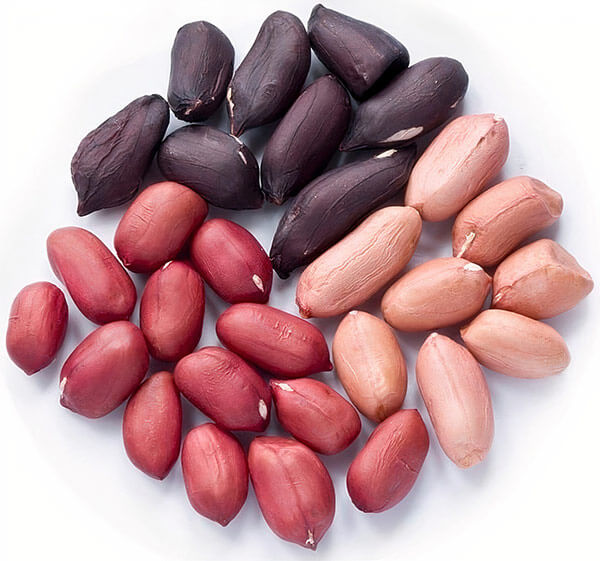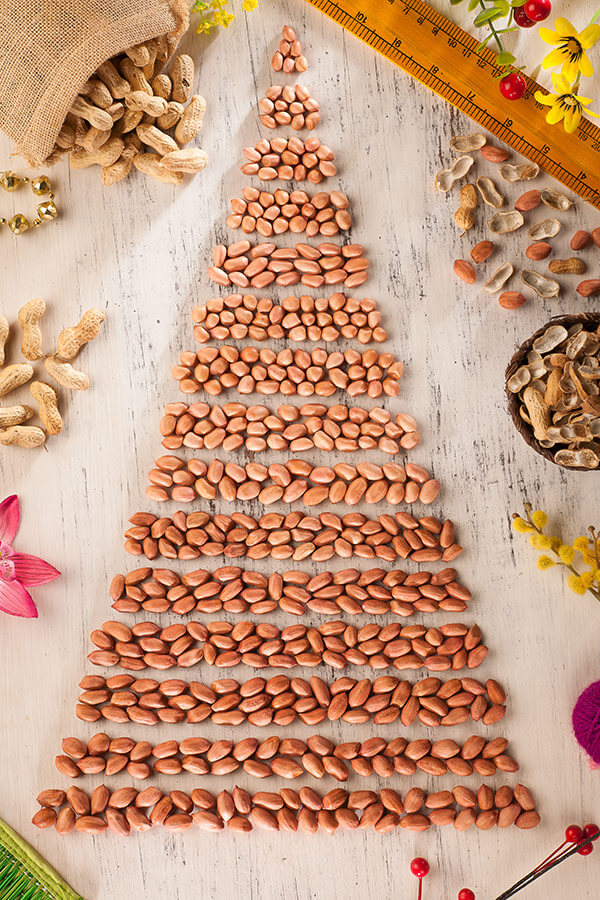


Abstract
In India, so far as many as 194 varieties have been released notwithstanding that South American continent is its homeland of groundnut and that the research on groundnut breeding and improvement is only about a century old in India. More than 20 public institutions representing 14 states are currently engaged on research on this crop and have come out with several high-yielding and stress-tolerant varieties for cultivation in various regions of the country where groundnut is grown.

Introduction
In India, groundnut breeding began as early as in 1915 at the Hebbal Farm in Mysore. With the establishment of ICRISAT in 1976 at Patancheru, facilitates global collection of about 15,000 germplasm and its systematic evaluation led to identification of several sources of resistance to both biotic and abiotic stresses. During 1980 to 1995, AICRP enhanced use of exotic germplasm in the national programme resulting in development of a number of varieties, such as JL-24, GG-2, Kadiri-3, M13 and J -11 with tolerance to various stresses. Bhaba Atomic Research Centre (BARC), Trombay, became the pioneering institution in mutation breeding research on groundnut. As many as 14 groundnut varieties popularly referred to as 'Trombay Groundnuts (TG)' have been developed either through mutation and selection or use of mutants in hybridisation followed by selection. By 2012, 194 varieties (108 Spanish bunch; 5 Valencia; 50 Virginia bunch and 31 Virginia runner) have been released.
| State-wise major resistance varieties for various biotic and abiotic stresses | |||||||||||||||
| S. No | State | Varieties | Type | Resistance of diseases | Nematode resistance | Resistance of insect pests | Abiotic stress tolerant | ||||||||
| ELS | LLS | Rust | Stem root | Collar rot | PBND | Aflatoxin | Spodoptera | Thrips | Leaf miner | ||||||
| Drought | |||||||||||||||
| 1 | Andra Pradesh | Abhaya (TPT-25) | Java | - | ✓ | - | ✓ | ✓ | ✓ | ✓ | - | - | - | - | - |
| Kadiri-9 | Java | - | ✓ | ✓ | - | ✓ | - | - | ✓ | - | - | - | ✓ | ||
| 2 | Tamil Nadu | Co (Gn)-5 | Bold | - | - | ✓ | - | - | ✓ | - | - | ✓ | - | ✓ | - |
| GG-16 (JSP-39) | Bold | - | - | - | - | - | ✓ | - | - | ✓ | ✓ | ✓ | - | ||
| 3 | Karnataka | Kadiri Haritandhra | Java | ✓ | ✓ | ✓ | - | - | ✓ | ✓ | - | ✓ | ✓ | ✓ | ✓ |
| Mankya | Java | - | ✓ | ✓ | - | - | ✓ | - | - | - | - | - | - | ||
| VRI (Gn)-6 | Java | - | ✓ | ✓ | - | - | ✓ | - | - | - | - | - | - | ||
| 4 | Maharastra | Phule Unap (JL-286) | Java | - | ✓ | ✓ | ✓ | - | - | - | - | ✓ | ✓ | ✓ | - |
| 5 | Orissa | Smruti (OG-52-1) | Java | - | ✓ | ✓ | ✓ | ✓ | - | - | - | - | - | - | - |
| Varsundhara (Dh-101) | Java | - | - | - | ✓ | - | ✓ | - | - | ✓ | ✓ | - | - | ||
| 6 | Gujarat | TG-26 | Java | - | ✓ | ✓ | - | - | ✓ | - | - | - | - | - | - |
| 7 | West Bengal | Girnar-3 | Java | - | - | - | - | - | - | - | - | - | ✓ | ✓ | - |
| 8 | Rajasthan | Durga (RG-382) | Bold | - | ✓ | ✓ | - | - | - | - | - | ✓ | ✓ | ✓ | - |
| 9 | Uttar Pradesh | Girnar-2 | Bold | - | ✓ | ✓ | - | - | ✓ | - | - | - | ✓ | ✓ | - |
| 10 | Punjab | Girnar-2 (PBS-24030) | Bold | - | ✓ | ✓ | - | - | ✓ | - | - | - | ✓ | ✓ | - |
| 11 | Madhya Pradesh | Jawahar GN-3 | Java | - | ✓ | ✓ | - | - | - | - | - | - | ✓ | ✓ | ✓ |
| 12 | Bihar & Jarkhand | Vasundhara (Dh-101) | Java | - | - | - | ✓ | - | ✓ | - | - | ✓ | ✓ | - | - |
Conclusion
Kadiri Haritandhra is an improved version having phenotypically disease resistance, high oil and yield. Thus, improved nutritional qualities would fetch premium price to the farmers without compromising the yield and meet the demand of peanut oil for industrial purposes.

Source
ICAR-DGR Groundnut a crop profile and compendium of notified varieties of India, Publication No.: DGR Pub. No. 03/2013-14 / Groundnut: a crop profile and compendium of notified varieties of India.
Keywords
Peanut, Peanut varieties, High yield peanut varieties, stress-tolerant peanut varieties, Disease resistant peanut varieties
Key Takeaways
• AICRP program paved the way for the development of a number of varieties, such as JL-24, GG-2, Kadiri-3, M13 and J -11 with tolerance to various stresses.
• Bhaba Atomic Research Centre (BARC), Trombay, became the pioneering institution in mutation breeding developed as many as 14 groundnut varieties popularly referred to as 'Trombay Groundnuts (TG).
• By 2012, 194 peanut varieties (108 Spanish bunch; 5 Valencia; 50 Virginia bunch and 31 Virginia runner) have been released.
